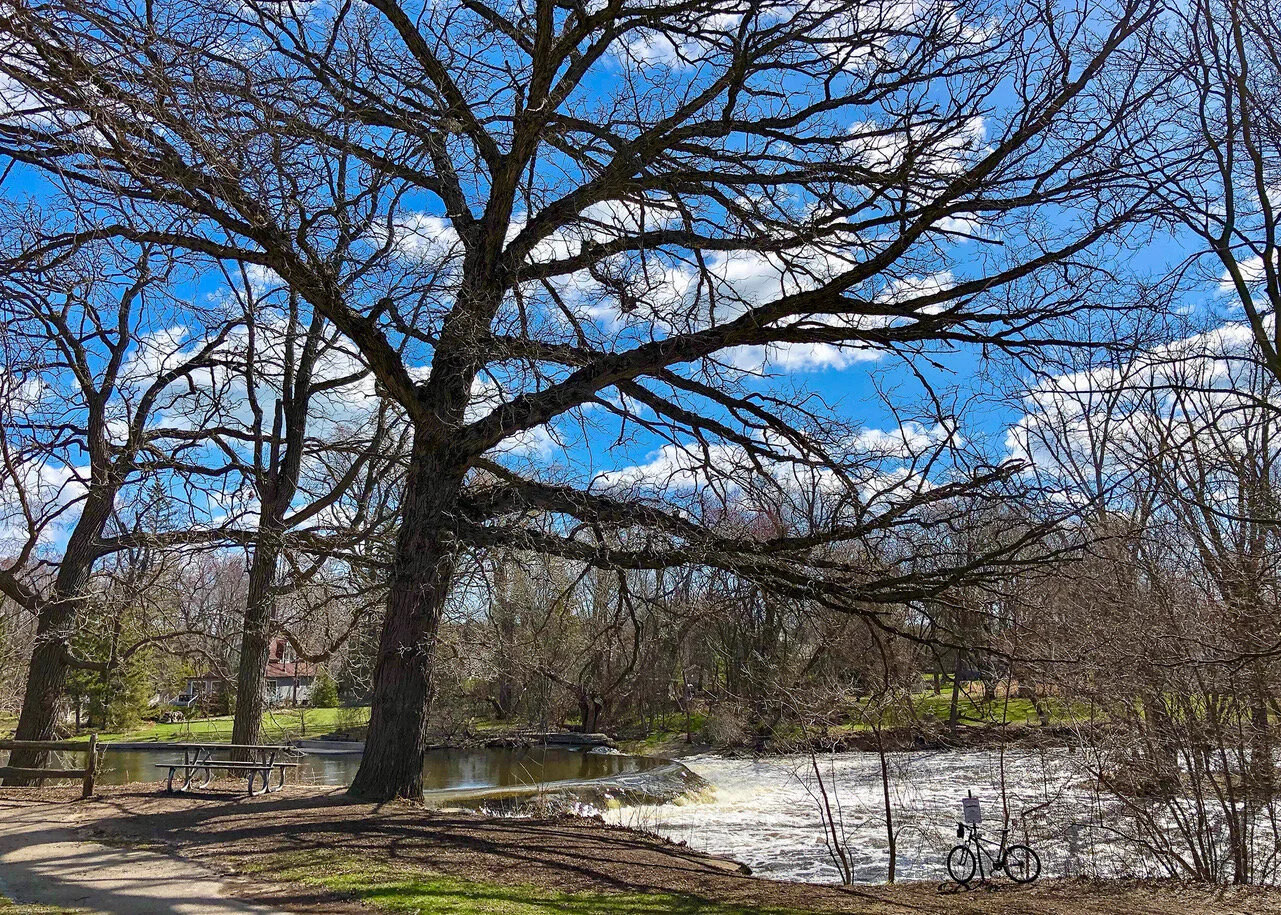This winter, just about the time I joined the board of the Milwaukee Audubon Society, I was thrilled one morning to see just such a new bird (to me): a Carolina wren. While I was assured by my colleagues on the MAS board that this sighting is not all that unusual, it was a surprise to me. I have had bird feeders on my deck for 25 years and never had a visit from a wren of any kind.
About 3 inches of fresh snow had fallen overnight, and the wren spent most of its time hopping around under the suet feeder, picking up crumbs chiseled off by the woodpeckers and nuthatches. It stayed quite awhile, but when it left, it was gone, not to return that day – or the next or the next. I believed this must have been a one-off affair. But a few nights later, it snowed a couple more inches, and there in the morning was the Carolina wren, along with its mate.
January was mild, and featured a lot of these minor snowfalls, a few inches here, a few there. Observation led me to an inescapable conclusion. The wrens showed up only after a fresh snow, never otherwise. They started going to the seed feeder and perching on the suet as well, but beyond that their behavior did not vary. One lengthy visit in the morning, then away for that day, and not to return until the next snow.
In February, winter dropped the hammer hard. It got very, very cold and stayed that way for nearly three weeks. And fresh snow came regularly, but no wrens came with it. I was bereft. I really had grown attached to these charming and amusing little characters. Now, I was sure, they must be goners. I had read up on Carolinas and learned that they are at about their extreme northwestern range limit here. Some life history accounts even mentioned this species’ propensity to push its range north during mild winters, only to retreat or succumb in harsh ones. Surely, I thought, I was seeing this very scenario playing out.
I shared my sorrowful account with MAS board members and got nothing but reassurances. The wrens are probably fine, folks said, they’re just hunkered down somewhere, riding it out. I was not entirely reassured, though. Just how long can a tiny bird with a big metabolism, already living at the extreme edge of its existence, “ride it out”?
When the cold spell ended, I kept an eye out, but saw no wrens. Then it snowed. Right on cue, there were my wrens, looking perfectly fit. And after that, with unseasonably warm March weather, they began to show up every day, snow or no.
One fine day, I heard a very loud and unfamiliar bird song. I looked out on the deck, and there on the railing sat a wren, the male I presume, singing its head off. I called my wife to see. Her response was to the effect, “Good lord, that little thing is making all that sound? It looks like it’s about to explode.”
A few days after, I was sitting on the deck with a friend. We were probably not 10 feet from the seed feeder, and the suet feeder was in arm’s reach above my head. A wren came to the seed, charming my friend who had like myself never seen a Carolina wren before. Then it flew to the suet, giving us a long, close look. “One bold bird,” said my friend.
Another day, my wife and I were wren-watching when it decided it wanted whatever was in a flower pot occupied at the time by a junco. The wren attacked and actually tackled the junco, knocking it out of the pot in a somersault before it recovered midair and beat a hasty retreat. A couple of days later, I watched alone as the wren (and again I’m going to assume it was the male) selectively and fiercely chased off every one of half a dozen English sparrows, leaving the chickadees and nuthatches in peace.
Now, we’ve gotten used to all the singing, and the wrens I thought I’d lost are busy building a nest under the eave of our house, just inches outside our bedroom window. I can stand there and watch it work (the female I will now presume) from less than a foot away. The wren occasionally gives me the stink-eye, but is unfazed. She rockets in and out at maximum wren-speed, but spends a surprising amount of time deciding exactly where each little bit of leaf it brings should go in the nest.
I’m always pleased to see any of our native birds at our feeders, no matter how common. There’s a delightful pair of downy woodpeckers that always arrive together. A pair of cardinals has my wife charmed to tears. They sit under the suet, and the male picks up bits and tenderly feeds them to his mate. A pair of red-bellied woodpeckers break up any convocation of other birds when they rush in. I often have indigo buntings nesting nearby, but only last year have I ever had one visit the feeder.
But these are all among “the usual customers.” Maybe one day I will feel the same way about Carolina wrens. But I doubt it.









